How The Names Of Subway Stations In Korea Have Changed Over The Years
Subway stations in Korea have undergone many name changes. Find out its interesting history and influences behind it!
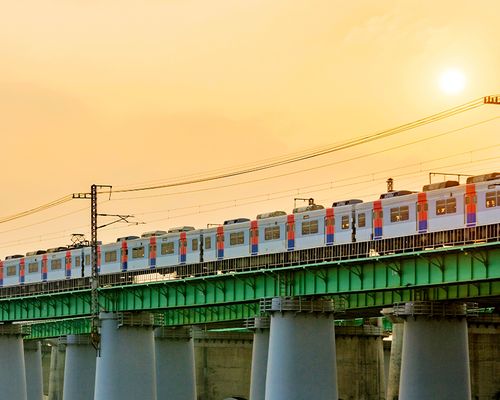
What do you know about the subway stations in Korea?
The subway system in Korea, especially in Seoul, is credited all over the world for its cleanliness and high-tech elements.
It has the 8th longest urban rail network in the world.
It is recognized as one of the best subway systems in the world by Jalopnik, an American automobile media outlet.
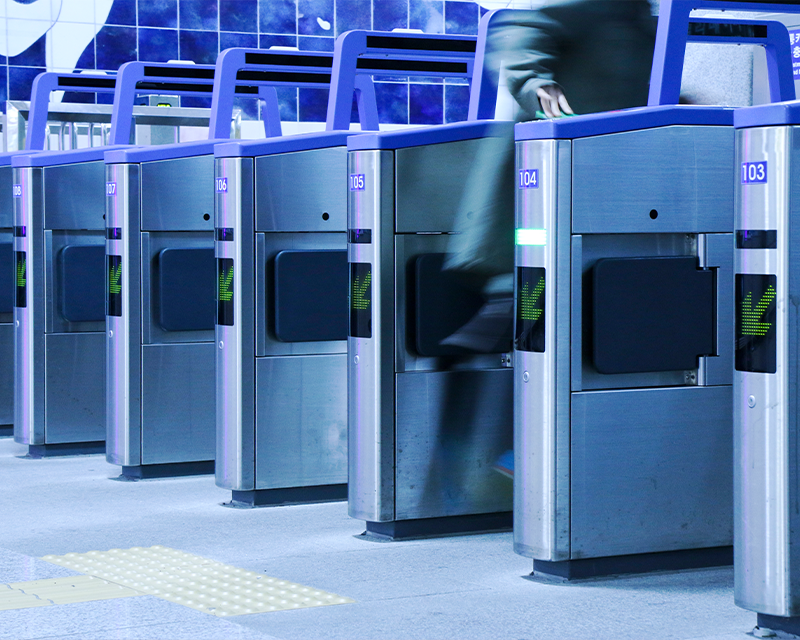
The subway system in Seoul alone has 324 stations.
The station names on the Seoul subway map contain interesting historical and cultural meanings.
Let's go deeper into the fascinating stories of each subway station that has changed its name over the years.
Stations Named After Universities

There are many universities in Seoul and the metropolitan area.
You've probably seen a lot of stations that were named after a famous university.
In fact, when Line 1 opened in 1974, the principal for naming each station was to use names of the district area.
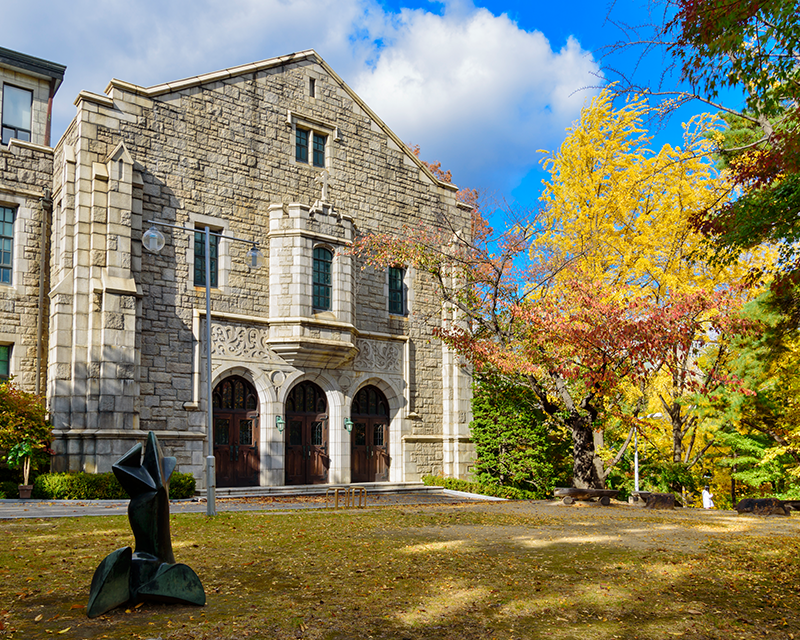
But as other lines started to operate one after another, there were many cases where two or more stations entered one area.
To solve this issue, they decided to use local landmarks as the names of each station.
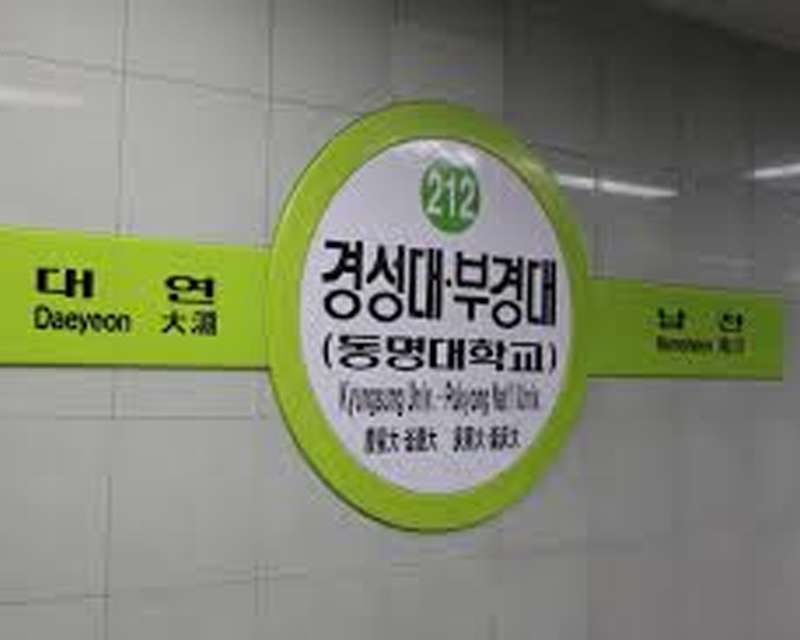 Source: theqoo
Source: theqoo
At this time, Ewha Womans University Station (Line 2), Seoul National University Station (Line 2), Hanyang University Station (Line 2), and Seoul National University of Education Station (Line 2 and 3) were given university names.
However, this caused a lot of backlash from other universities because naming a subway station after a university was great for publicity.
In fact, when a new station is built near a university, there is usually a huge conflict.
For example, when Busan Subway Line 2 opened in 2001, the three nearby universities fought hard and eventually got the ridiculous name 'Kyungsung University-Pukyong National University Station'.
Let's find out which subway stations have been renamed after universities!
1. Donggyo Station → Hongik University Station
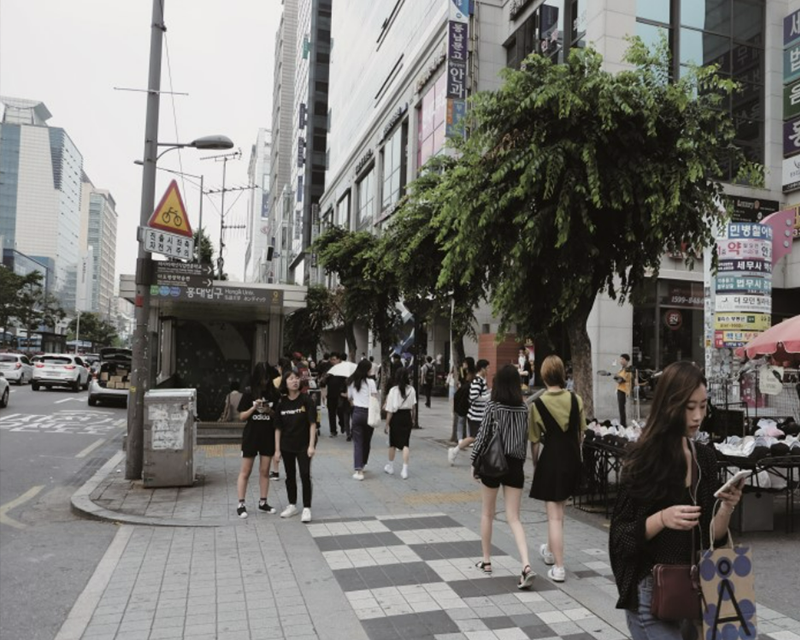
Hongik University Station is one of the most famous subway stations in Seoul, where Line 2, Gyeongui-Jungang Line, and the AREX Airport Railroad pass.
Currently, it is ranked 5th among all stations in the metropolitan area.
It is said that the original name of Hongik University Station was Donggyo Station.
Hongik University Station is located in Donggyo-dong, Mapo-gu, Seoul.
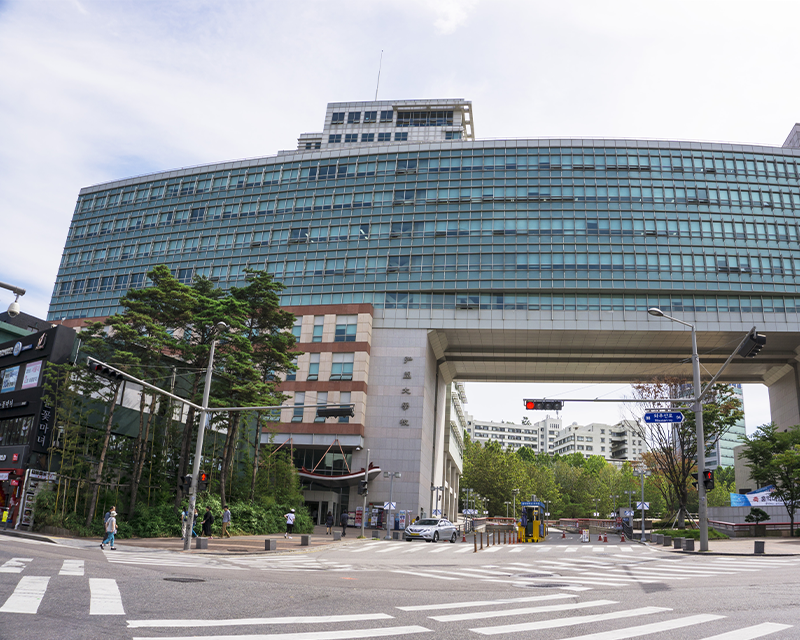
However, it is said that the name was changed to Hongik University Station at the request of Hongik University just 4 days before Line 2 opened.
Like Ewha Womans University Station, Seoul National University of Education Station, Hanyang University Station, and Seoul National University Station, they also asked to rename the station after the university.
The subway station name was then changed at the request of Hongik University, and the craze of naming stations after universities began.
2. Hwayang Station → Konkuk University Station
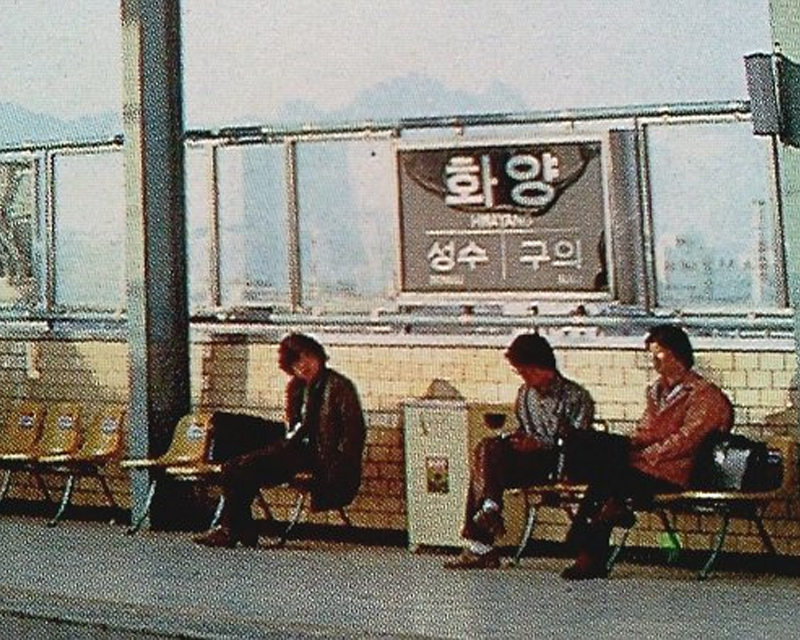
Konkuk University Station is a transfer station for Line 2 and 7. It's located near Konkuk University.
When Line 2 opened, it was named Hwayang Station because it was located in Hwayang-dong, Gwangjin-gu.
 Source: Wikipedia
Source: Wikipedia
However, due to the craze that was going on at the time for naming stations after a university, Konkuk University requested that Hwayang Station be renamed as Konkuk University Station.
Eventually, in 1985, Hwayang Station changed its name to Konkuk University Station.
And Konkuk University Street near Konkuk University Station became one of the most popular university districts along with Hongik University Street.
3. Hwigyeong Station→ Hankuk University of Foreign Studies Station
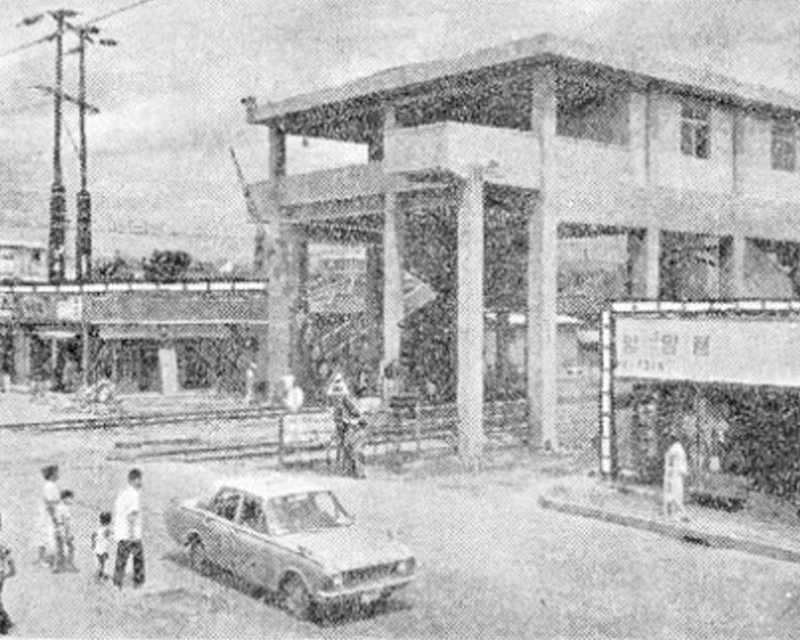
Hankuk University of Foreign Studies Station is a subway station on Line 1 located near Hankuk University of Foreign Studies Seoul Campus.
At the time of its opening, it was located on the border of Hwigyeong-dong and Imun-dong so it was called Hwigyeong Station.
However, things got a little complicated when Hoegi Station opened nearby.
Hwigyeong Station was located in Imun-dong, and Hoegi Station was located in Hwigyeong-dong.
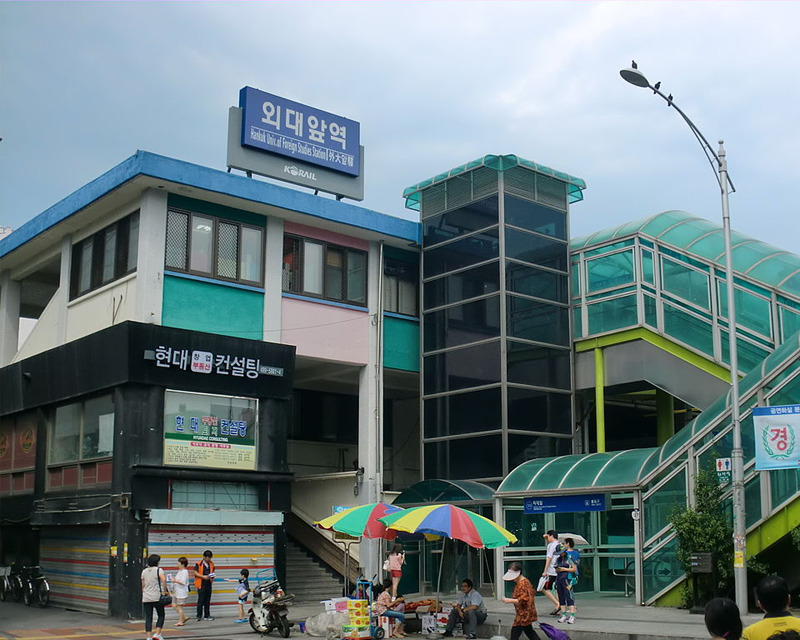
So in 1996, the name was changed from Hwigyeong Station to Hankuk University of Foreign Studies Station.
The station name was changed to reduce confusion but it is said that Hankuk University of Foreign Studies worked hard to change the station name to the name of their university.
4. Chongshin University Station (Isu) → Isu Station → Chongshin University Station (Isu)
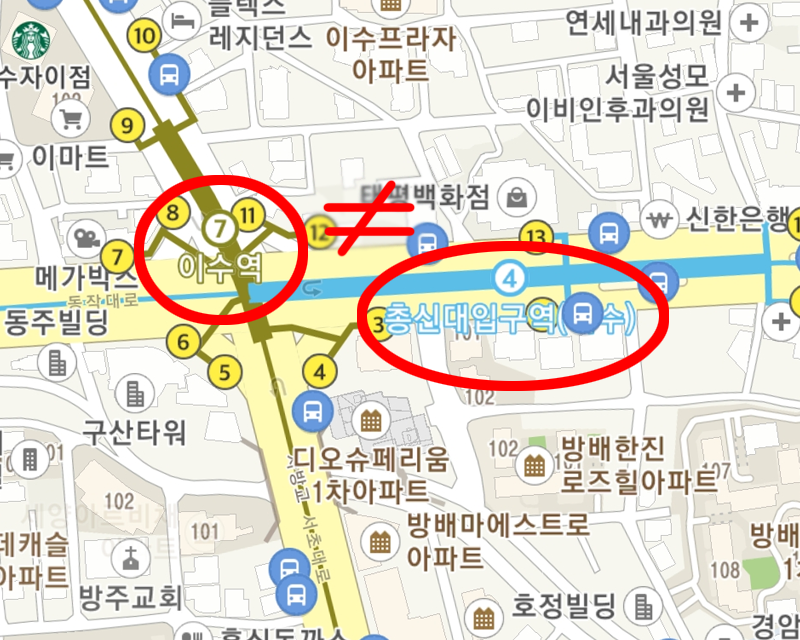
Chongshin University Station and Isu Sation are the only transfer stations in Korea that are famous for having different station names for each line.
Usually, the transfer stations have the same name, but in this case, Line 4 is named Chongshin University Station, and Line 7 is named Isu Station.
There's a very complicated story behind this.
 Source: Wikipedia
Source: Wikipedia
In 1984, when Line 4 first opened, Chongshin University invested about 24 million won which is about 80 million won in current currency value (Approx. 71,000 USD) to promote the school and the name of the station became Chongshin University Station.
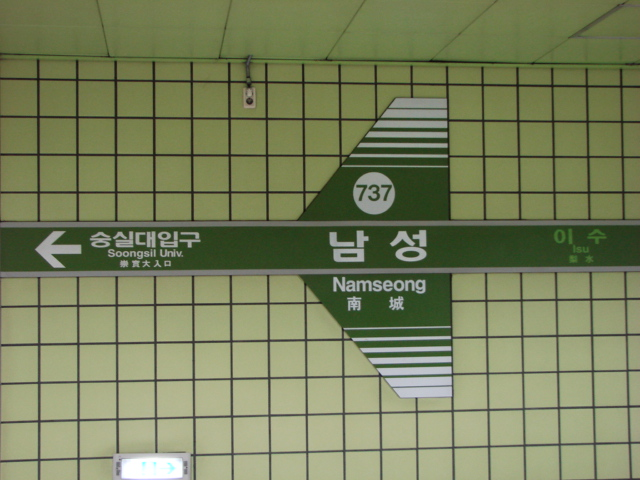
Source: Wikipedia
After, when Line 7 opened in 2000, a transfer station and Namseong Station were created which passed through Chongshin University Station at the time.
The problem was, Namseong Station was much closer to Chongshin University.
So, the Chongshin University Station was changed to Isu Station on Line 4 and Line 7, and Namseong Station on Line 7 was renamed Namseong Station (Chongshin University Station).
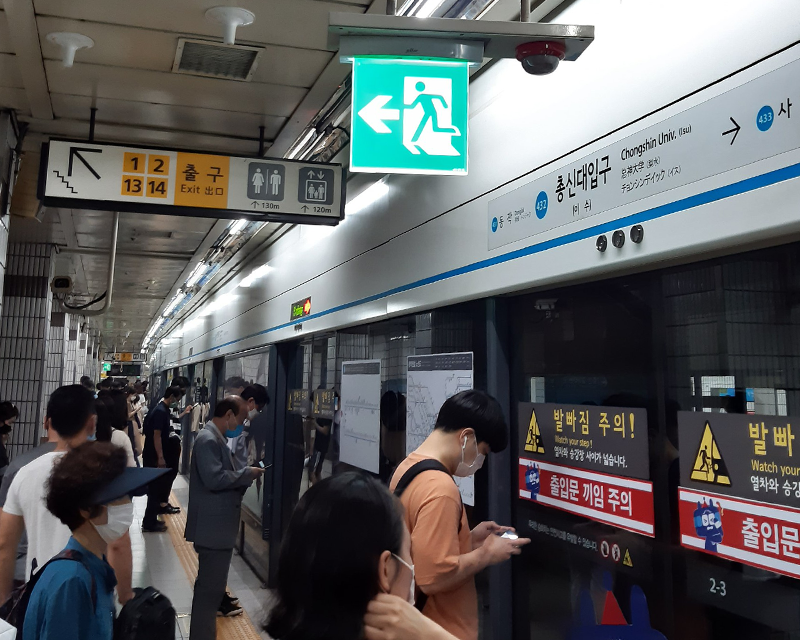 Source: Wikipedia
Source: Wikipedia
After that, Chongshin University raised a huge protest.
They protested against various things but it was mainly to take the name of the station with a user of 100,000 or more.
In the end, two months after the station name was changed, Line 4 was renamed Chongshin University Station and Line 7 was renamed Isu Station.
This case still gets a lot of backlash and criticism for Chongshin University's selfishness and unwillingness to cooperate.
5. Yuljeon Station→ Sungkyunkwan University Entrance Station → Sungkyunkwan University Station
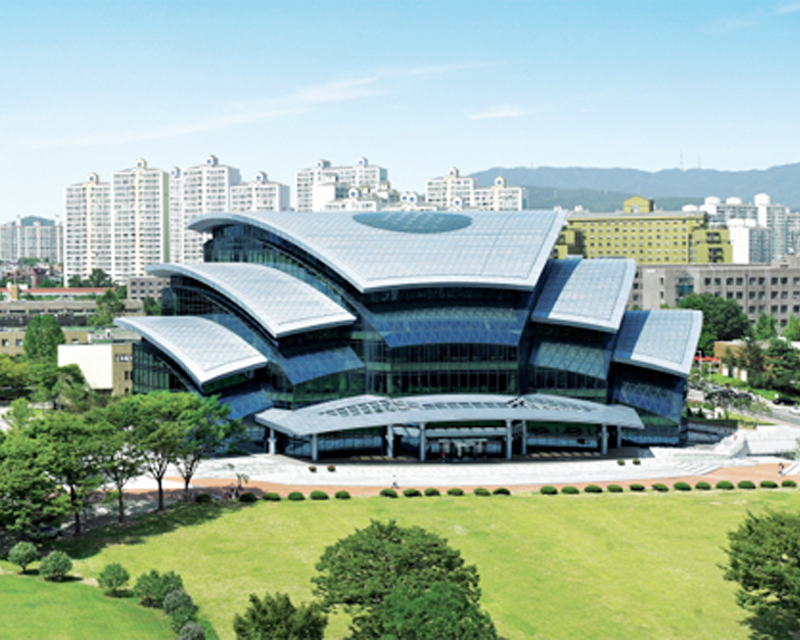 Source: Maeil Business Newspaper
Source: Maeil Business Newspaper
Sungkyunkwan University has two campuses, one is located in Hyehwa, Daehak-ro in Seoul, and the other is located in Suwon.
Among them, Sungkyunkwan University Station is on Line 1 located near the Suwon campus.
When the subway station opened in 1979, it had the name Yuljeon Station.
The name of the area where the subway station is located is Yuljeon-dong and in the past, it was known for having a lot of chestnut trees.
 Source: Wikipedia
Source: Wikipedia
However, starting in 1984, Sungkyunkwan University became the station name.
This is because Sungkyunkwan University serves as a landmark in Yuljeon-dong and students commuting to the Suwon campus of Sungkyunkwan University use the station a lot.
Residents living there insisted that the historic name of Yuljeon Station should be restored but it has been in vain and the name still remains Sungkyunkwan University Station.
6. Seogang Station → Sogang University Station
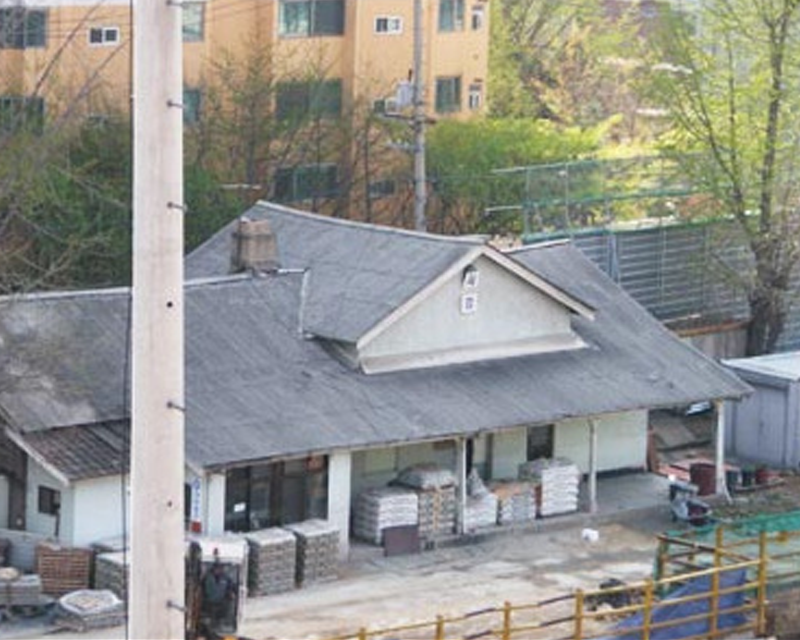 Source: Ohmynews
Source: Ohmynews
Sogang University Station is a subway station on the Gyeongui-Jungang Line located in front of Sogang University.
The station has a very long history which first opened in 1929 under the name of Seogang Station.
It was changed to Sogang University Station because it's located close to Seogang Naru (서강나루), a place where ships crossed the Han River. It is now where the Seogang Bridge is located.
At the time, Seogang Station handled general passenger trains and trains that supplied coal.
However, after the liberation, it was only used as a freight station.
 Source: Sogang University
Source: Sogang University
After that, Seogang Station was revived with the Gyeongui-Jungang Line, but there was an argument that the name Seogang Station was not appropriate because the new Gwangheungchang Station on Line 6 was closer to Seogang Bridge.
So it was renamed Sogang University Station after the nearby Sogang University.
When it was Seogang Station, it was spelled differently than Sogang University Station to follow the English name of the university.
7. Yeoncheon Station → Seongbuk Station → Kwangwoon University Station
 Source: 시간여행자 on Facebook
Source: 시간여행자 on Facebook
Kwangwoon University Station is a subway station where Line 1 and the Gyeongchun Line pass.
During the Japanese colonial period, it was called Yeoncheon Station and was used by trains for freight transportation.
Then in 1963, it was called Seongbuk Station, and when Line 1 opened, general trains started running.
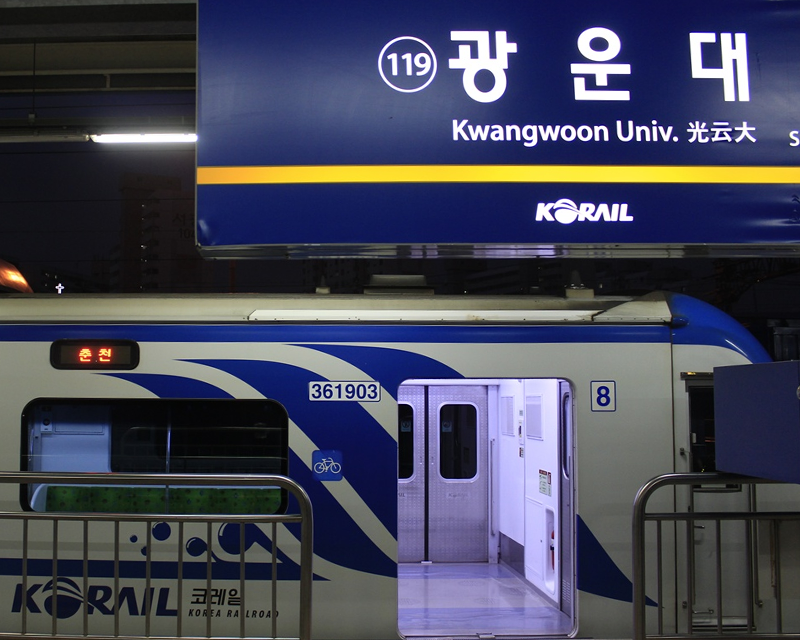 Source: ohmynews
Source: ohmynews
The problem was that the name Seongbuk Station did not match the name of the area.
In the past, this area was in Seongbuk-gu, but as the district changed, it was not anywhere near Seongbuk-gu or Seongbuk-dong.
Not missing a beat, Kwangwoon University launched a campaign to get the station name.
At the time, the Korea Railroad Corporation, branded as KORAIL, rejected Kwangwoon University's request because there were too many fights over universities trying to get stations named after them.
However, over 80% of residents voted in favor of using the name of Kwangwoon University so eventually in 2012, it was renamed Kwangwoon University Station.
Stations Named After District Images
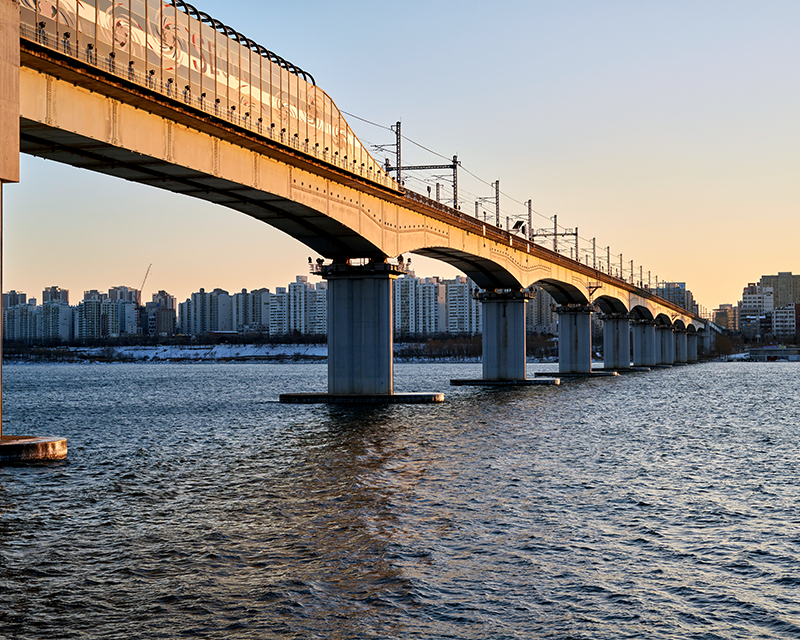
As mentioned above, there are a few cases where the name of a subway station has been renamed even when there were no problems.
It is because of the image or perceptions of the region.
The names of the stations were changed to enhance the overall image of the area.
Let's take a look at some of the cases down below.
1. Racetrack Station → Seoul Racecourse Park Station

Seoul Racecourse Park Station is on Line 4.
It was created after requests made by the Korean horse-riding community to increase accessibility to Seoul Racecourse Park.
When the first station opened, it was Racetrack Station.
However, in Korea, horse racing has a strong image of gambling instead of a sport.
So when many Koreans see the word racetrack, they often associate it with gambling.
 Source: Herald Corporation
Source: Herald Corporation
So to get rid of the negative image associated with the name 'racetrack', they changed the name to Seoul Racecourse Park Station.
The racetrack was also renamed Let's Run Park Seoul.
2. Guro Industrial Complex Station → Guro Digital Complex Station
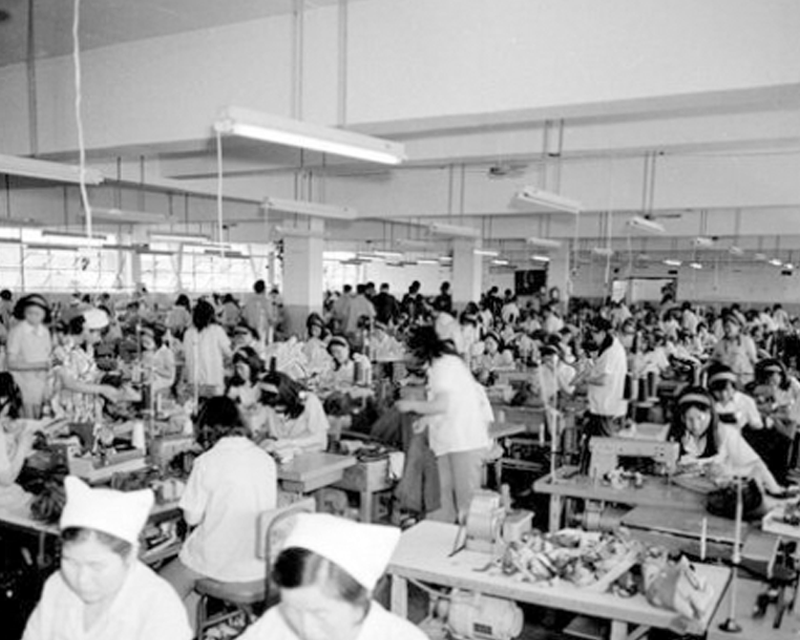 Source: The Chosun Ilbo
Source: The Chosun Ilbo
Guro Digital Complex Station is on Line 2 located in Guro-gu, Seoul.
It used to be called Guro Industrial Complex Station because there were many factories nearby.
However, in 2004, the name was changed to Guro Digital Complex in order to improve the local image.
In the past, the sewing industry was huge in Korea and it helped grow the economy due to the numerous labor-intensive manufacturing operations that were taken place here.
 Source: Wikipedia
Source: Wikipedia
However, the name was changed because it has a very outdated image.
In addition, at the time, most of the factories in the vicinity were moved overseas or to rural areas, and it is said that the IT industry entered from the early 2000s.
Therefore, it was concluded that the name Guro Digital Complex was more appropriate than the previous name.
3. Garibong Station → Gasan Digital Complex Station

Gasan Digital Complex Station is a transfer station on Line 1 and 7 located in Gasan-dong.
The Guro Digital Complex and Gasan Digital Complex are located very close to each other and they are collectively called the G Valley.
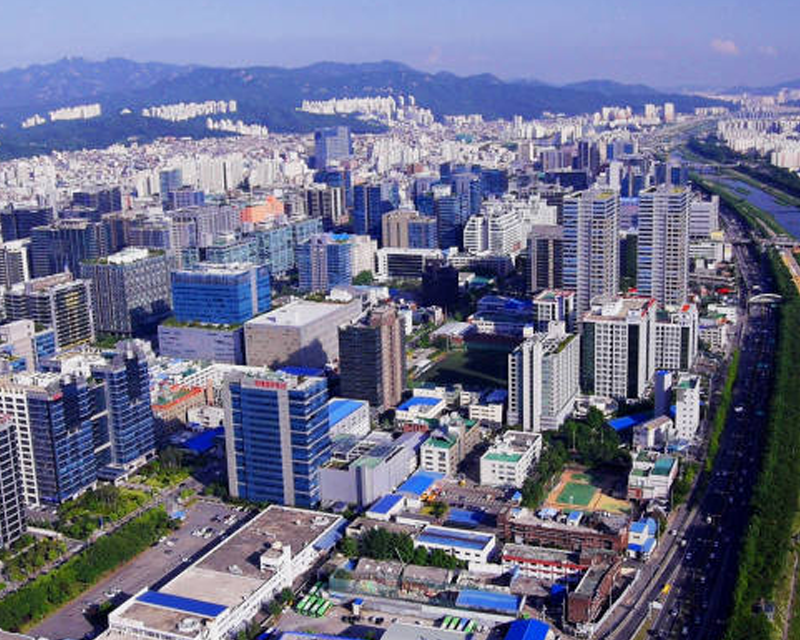 Source: etnews
Source: etnews
The story behind the name change of Garibong Station to Gasan Digital Complex Station is the same as the previous case of Guro Digital Complex.
They saw that the Guro Digital Complex Station changed its name to create an image of a high-tech complex, so they also followed their steps.
The names of both Guro Digital Complex and Gasan Digital Complex are too long so people often shorten its name to Gu-di or Ga-di.
4. Seongnae Station → Jamsillaru
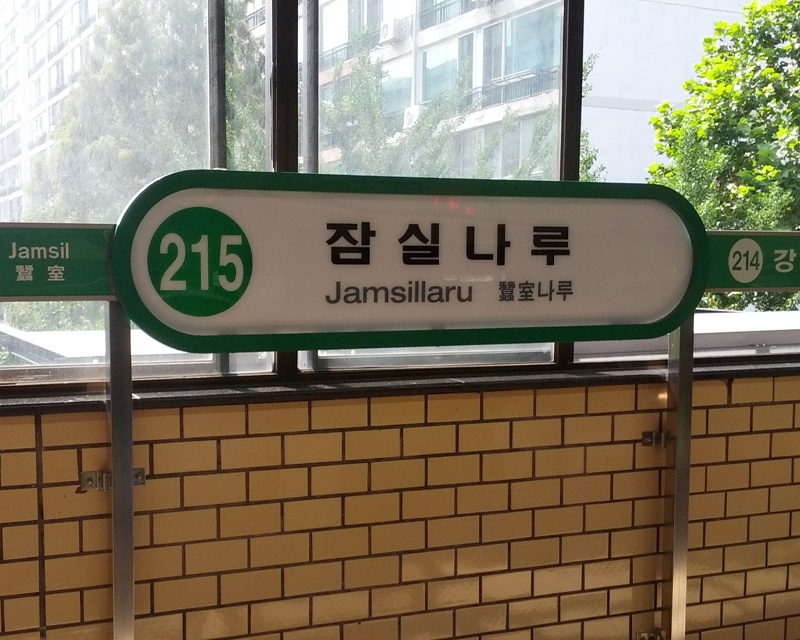 Source: Wikipedia
Source: Wikipedia
Jamsillaru Station on Line 2 was originally called Seongnae Station.
The name Seongnae was given because Seongnaecheon is located northeast of the station.
The problem was that there was another area called Seongnae-dong in Gangdong-gu.
In order to get to Seongnae-dong in Gangdong-gu, you have to ride 4 more stops from Seongnae Station.
To prevent this kind of confusion, in 2010 the words Jamsil and Laru (나루), which refers to a place where boats cross a river were combined to create the word Jamsillaru.
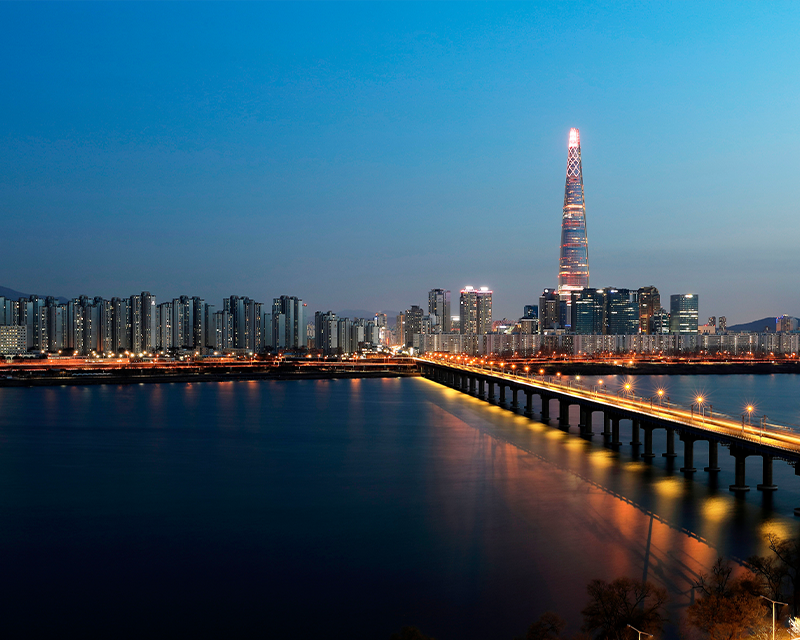
It is true that the station is within the area of Jamsil but there is already a station called Jamsil Station.
There is another reason behind its name, which is the fact that Jamsil is located in Gangnam and has an image of a neighborhood where many rich people live because the prices are so high.
So when Seongnae Station changed its name, the residents strongly recommended Jamsillaru Station.
In other words, it can be said that the name Jamsil was added to further elaborate the image of a wealthy neighborhood to raise the housing prices.
5. Shincheon Station → Jamsilsaenae Station
 Source: Herald Corporation
Source: Herald Corporation
Jamsilsaenae Station is on Line 2 located next to Jamsillaru Station and Jamsil Station.
You can guess why the name Shincheon Station was changed!
It's similar to the reason why Seongnae Station was changed to Jamsillaru Station.
The intention was to reinforce the image of a wealthy neighborhood by adding Jamsil to the station name.
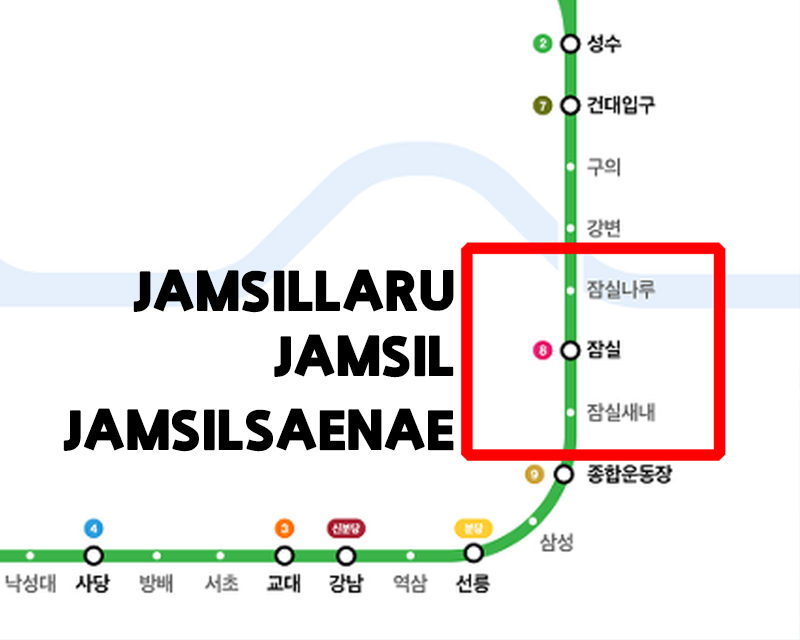
Of course, the reason for the name change was because of the high possibility of confusion between Sincheon Station and Sinchon Station, also on Line 2.
It is said that Koreans, as well as foreigners, often confuse the stations due to similar pronunciations.
So, along with the name Jamsil, the word Saenae was created which is the Korean word for Shincheon (新川).
However, as a result, there have been many opinions that it has become even more confusing as there are now 3 stations with the name Jamsil on Line 2.
Stations Named After Landmarks
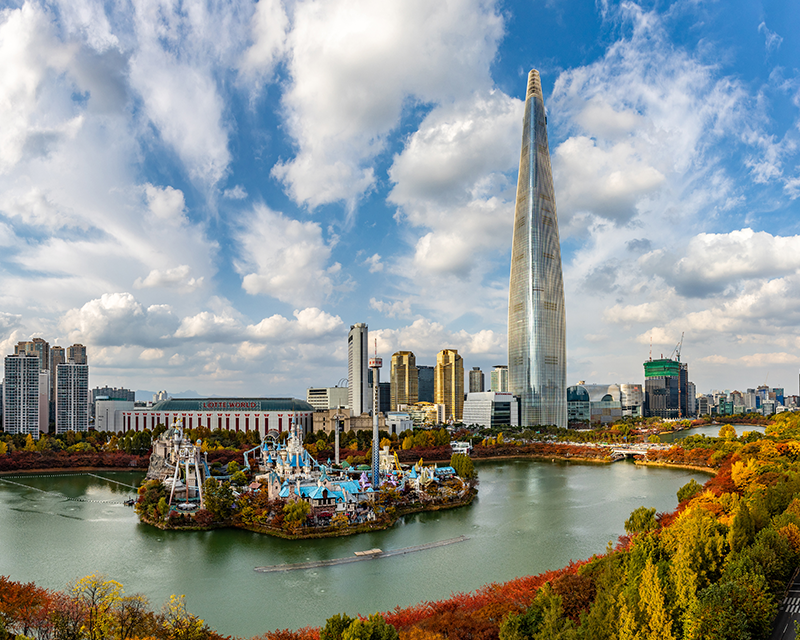
I mentioned earlier that when naming a station, sometimes they are named after a landmark in the area.
Over time, their landmarks may disappear or change from the time the stations are first built.
In these cases, the names of the subway stations are also changed.
Let's take a look at some examples!
1. Jungangchung Station → Gyeongbokgung Station
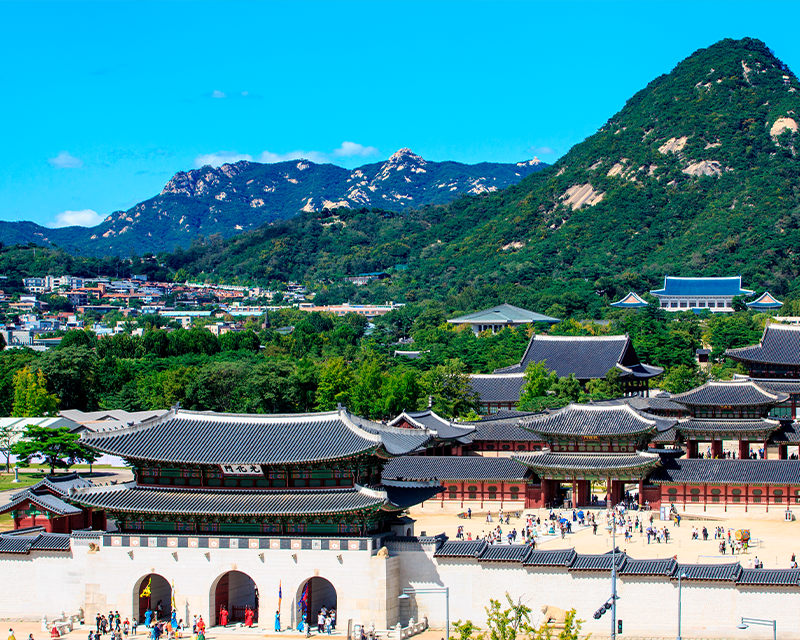
To visit the beautiful Gyeongbokgung Palace, you must go to Gyeongbokgung Station on Line 3.
When the station first opened, it was actually called Jungangchung Station.
Jungangchung (중앙청) was the Japanese General Government Building from 1926 to 1996.
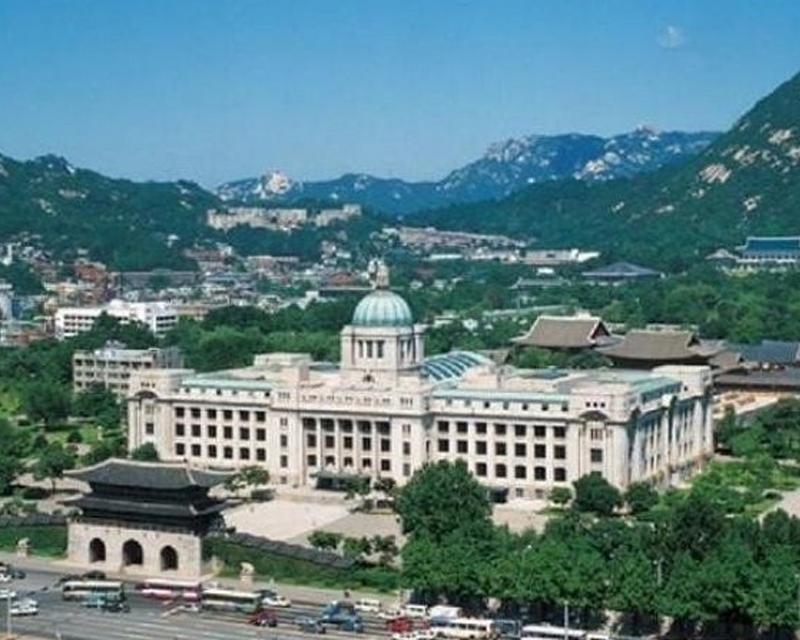
The Japanese General Government Building was established to effectively control Korea during the Japanese colonial period.
At the time, in order to gain possession of Korea's history, culture, and patriotism to antagonize Koreans, they demolished some buildings inside Gyeongbokgung Palace and built the Japanese General Government Building.
Even after the liberation, the building continued to be used as the central office but there were many issues that were raised about putting the symbol of the Japanese colonial era in the middle of Seoul.
 Source: Wikipedia
Source: Wikipedia
In 1970, the Central Government Complex was built and in 1982, the Gwacheon Government Complex was built.
This caused a lot of major institutions in Korea to relocate.
The building was used as the National Museum of Korea in 1986 and the name of the subway station was changed to Gyeongbokgung Station.
The building is no longer in existence today.
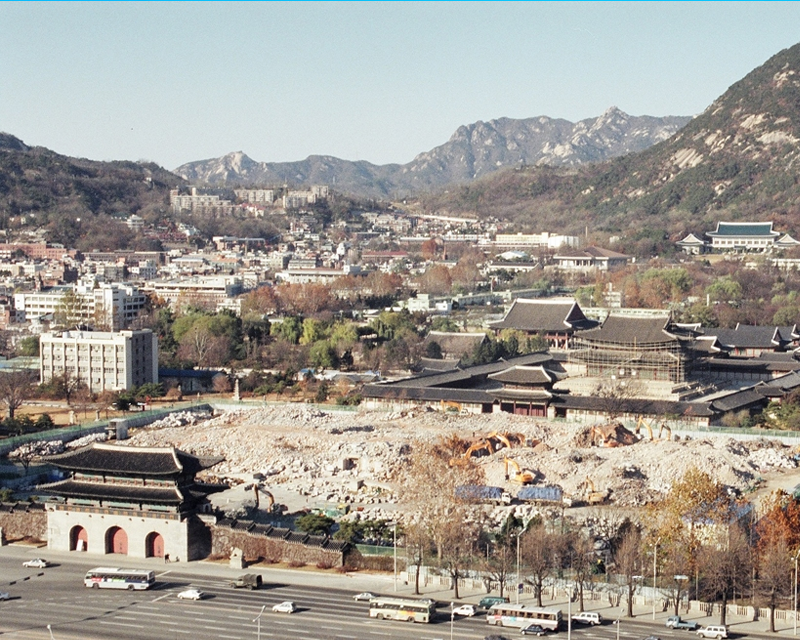 Source: Yonhap News
Source: Yonhap News
What happened to the Japanese General Government Building?
In 1995, former President Kim Young-sam demolished the building during the National Liberation Day of Korea, a cultural festival celebrating the 50th anniversary of liberation.
It is unconfirmed, but there were also stories that President Kim Young-sam's approval rating at the time exploded and rose to 70%.
As the building was demolished, we are able to see the beautiful Gyeongbokgung Palace today.
2. Seoul Stadium Station → Dongdaemun Stadium Station → Dongdaemun History & Culture Park Station
 Source: mbc archive
Source: mbc archive
Dongdaemun History & Culture Park Station is on Line 2, 4, and 5 located near Dongdaemun History & Culture Park.
When the station first opened in 1983, it was called Seoul Stadium.
During the Joseon Dynasty, a security department was located here and during the Japanese colonial period, the name was changed to Gyeongseong Stadium by the Japanese.
But after the liberation, it was changed to Seoul Stadium.
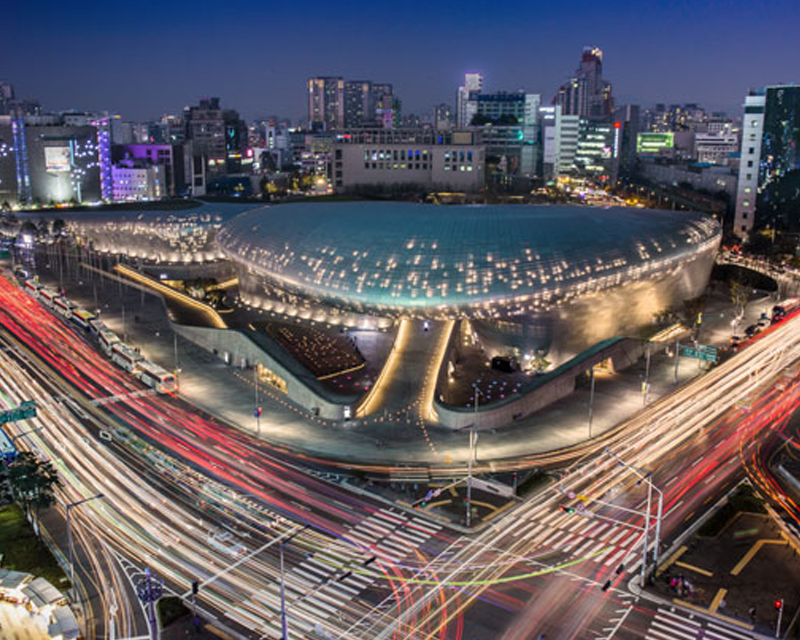 Source: Seoul Design Foundation
Source: Seoul Design Foundation
Later, after Jamsil Sports Complex was established in 1984, the name of the stadium changed to Dongdaemun Stadium Station for a clear distinction.
In 2008, Dongdaemun Stadium was demolished and Dongdaemun History & Culture Park was created which also caused the station's name to change in 2009.
Currently, Dongdaemun History & Culture Park is full of exhibition halls where you can see the history and achievements of the old Dongdaemun Stadium.
3. Cargo Truck Terminal Station → Nambu Bus Terminal Station
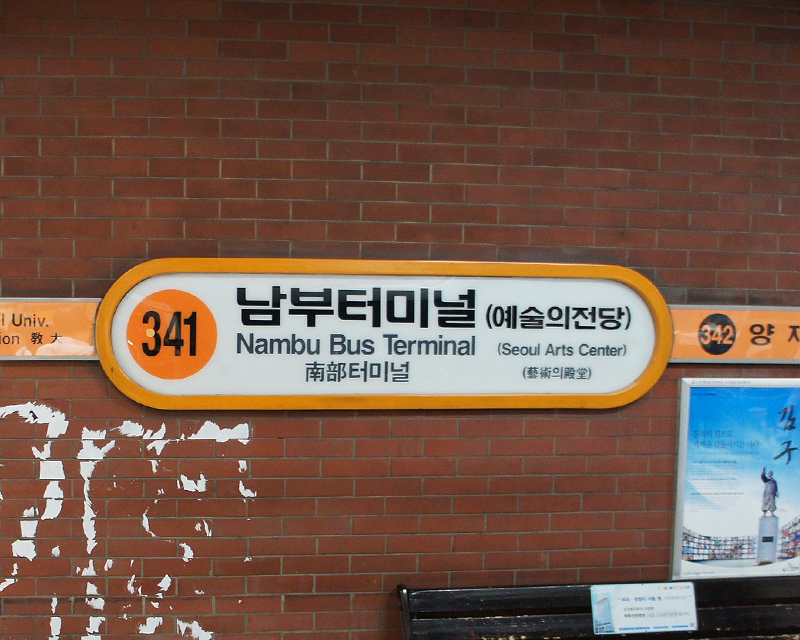 Source: Wikipedia
Source: Wikipedia
When Line 3 of the Seoul Metropolitan Subway first opened in 1985, it was called the Cargo Truck Terminal Station because there was a small cargo terminal there.
Later, in 1990, the cargo truck terminal was changed to a bus terminal called Seoul Nambu Terminal which caused the station name to change to Nambu Bus Terminal.
When you visit Korea, if you stay in Seoul and travel to another area, you may find yourself at Nambu Bus Terminal Station!

Today we looked at the history of the name changes of various subway stations in Seoul.
Many institutions and universities were involved, along with the socio-cultural history of Seoul so wasn't it interesting to find out more about it?
I use the subway frequently on my daily commute and it was fascinating to learn about how each station was named.